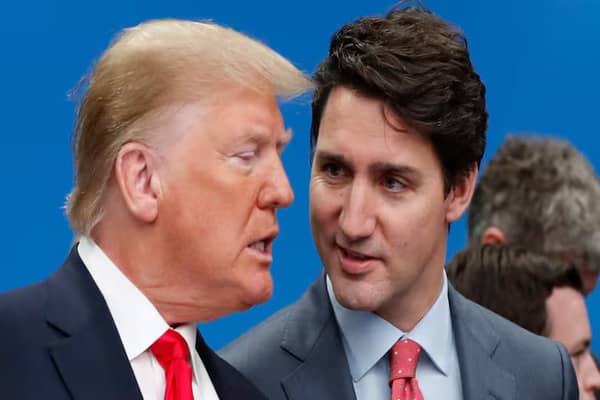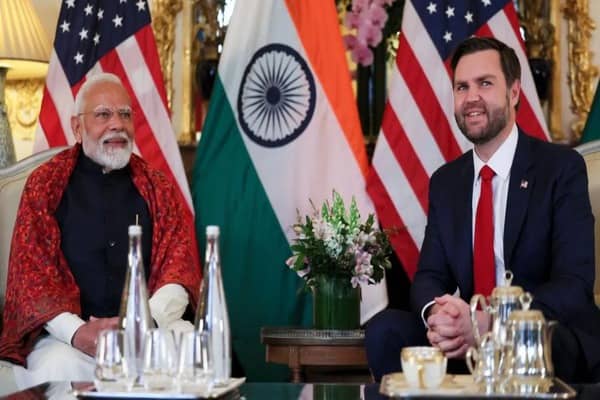Donald Trump’s threat to impose significant tariffs on Canadian exports and his taunting of Prime Minister Justin Trudeau are central tactics in his negotiating strategy to secure the best trade terms for the U.S., according to people familiar with his methods. Trump has warned that on January 20, his first day in office, he will impose a 25% tariff on all goods entering the U.S. from Canada and Mexico unless they take action to curb the flow of drugs and migrants across their borders.
Since making this threat, Trump has taunted Trudeau by calling him “governor” and referring to Canada as the “51st state” in a series of social media posts. Analysts say this approach mirrors Trump’s well-known negotiating style, which he has applied both in business and as president. Stephen Moore, a former economic adviser to Trump during his first term, believes the president-elect is using this tactic to gain leverage in renegotiating the trade agreement between the U.S., Canada, and Mexico.
“I think there’s no question that that’s what he’s doing here,” Moore stated. “I’ve seen Trump firsthand during his presidency and talked to him a lot about this. He uses the threat of tariffs to get countries to do things he believes are in America’s national security and economic interests.” While Moore is no advocate of tariffs due to their economic impact, he understands why Trump is using them against Canada and Mexico. “He wants to ensure that the trade deals we have are fair for American workers and companies,” he explained. “This strategy worked well in his first term, and I hope it will in his second term too.”
In 2018, Trump used similar tactics during the negotiations that led to the Canada-U.S.-Mexico Agreement (CUSMA), imposing tariffs on steel and aluminum, threatening tariffs on auto exports, and calling Trudeau “very dishonest and weak.”
Eugene B. Kogan, a Harvard negotiation expert, argues that Trump’s tactic of denigrating opponents to gain leverage is a key part of his strategy. “Prime Minister Trudeau is in political trouble at home, and I think President-elect Trump senses weakness,” Kogan said. “He smells blood.” Kogan described Trump as a “ruthless analyst” who exploits his opponents’ vulnerabilities to turn them into opportunities. “Trump is always thinking about how to exploit an opponent’s weaknesses,” Kogan added. “He’s making a power move driven by the desire to establish leverage.”
Trump’s transition team did not respond to requests for comment. Analysts from Wall Street to Bay Street view Trump’s tariff threat against Canada and Mexico as an opening salvo in negotiations over the three-way trade deal, which will be up for renewal in 2026. “This tariff threat effectively marks the start of negotiations,” said international wealth management firm UBS Global. “Trump’s best use of tariffs is as a bargaining chip to force Canada into concessions during CUSMA renegotiations,” wrote TD economist Marc Ercolao.
“If Canada doesn’t comply, Trump will follow through with the tariffs,” said commentator Thiessen. “I also think he knows that Justin Trudeau is politically weak.” On Christmas Day, Trump suggested that hockey legend Wayne Gretzky run for Prime Minister of Canada, claiming Gretzky would win easily. Trump has also made remarks about purchasing Greenland and gaining control of the Panama Canal, all of which align with countering the influence of Russia and China.
“This isn’t just random; there’s a coherent strategy behind it,” an official stated. “Trump knows exactly which levers to pull.” While many agree that Trump’s tactics toward Canada are designed to gain leverage, a key question remains: what is his ultimate goal? Some believe that cracking down on fentanyl trafficking and illegal migration, Trump’s stated reasons for the tariff threat, is just part of his larger strategy. This theory gained traction when two of Trudeau’s cabinet ministers met with two of Trump’s cabinet picks in Florida to discuss Canada’s plans for improving border security.
Trump has repeatedly — and inaccurately — claimed that the U.S. is subsidizing Canada due to the trade imbalance. In 2023, the U.S. had a trade deficit of about $75 billion with Canada, primarily driven by Canada’s record-high crude oil exports. The U.S. imported more petroleum from Canada last year than from any other country combined. Moore believes Trump’s ultimate goal is to make North America the world’s most geopolitically important region in energy.



